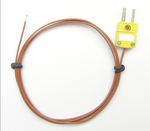Mabrok
Full Member level 4

Hi,
I will use CGH40010F transistor in high power amplifier testing (upto 40 dBm output power). I have attached the transistor on heatsink directly without any interface (like indium foil or thermal paste) as this is my first time using this transistor and it is quite expensive, I am worrying about overheating and burn of the device during the power measurements? So, anyone have used this transistor please share your experience especially about overheating and input power limitations if any? Thanks in advanced.
I will use CGH40010F transistor in high power amplifier testing (upto 40 dBm output power). I have attached the transistor on heatsink directly without any interface (like indium foil or thermal paste) as this is my first time using this transistor and it is quite expensive, I am worrying about overheating and burn of the device during the power measurements? So, anyone have used this transistor please share your experience especially about overheating and input power limitations if any? Thanks in advanced.



